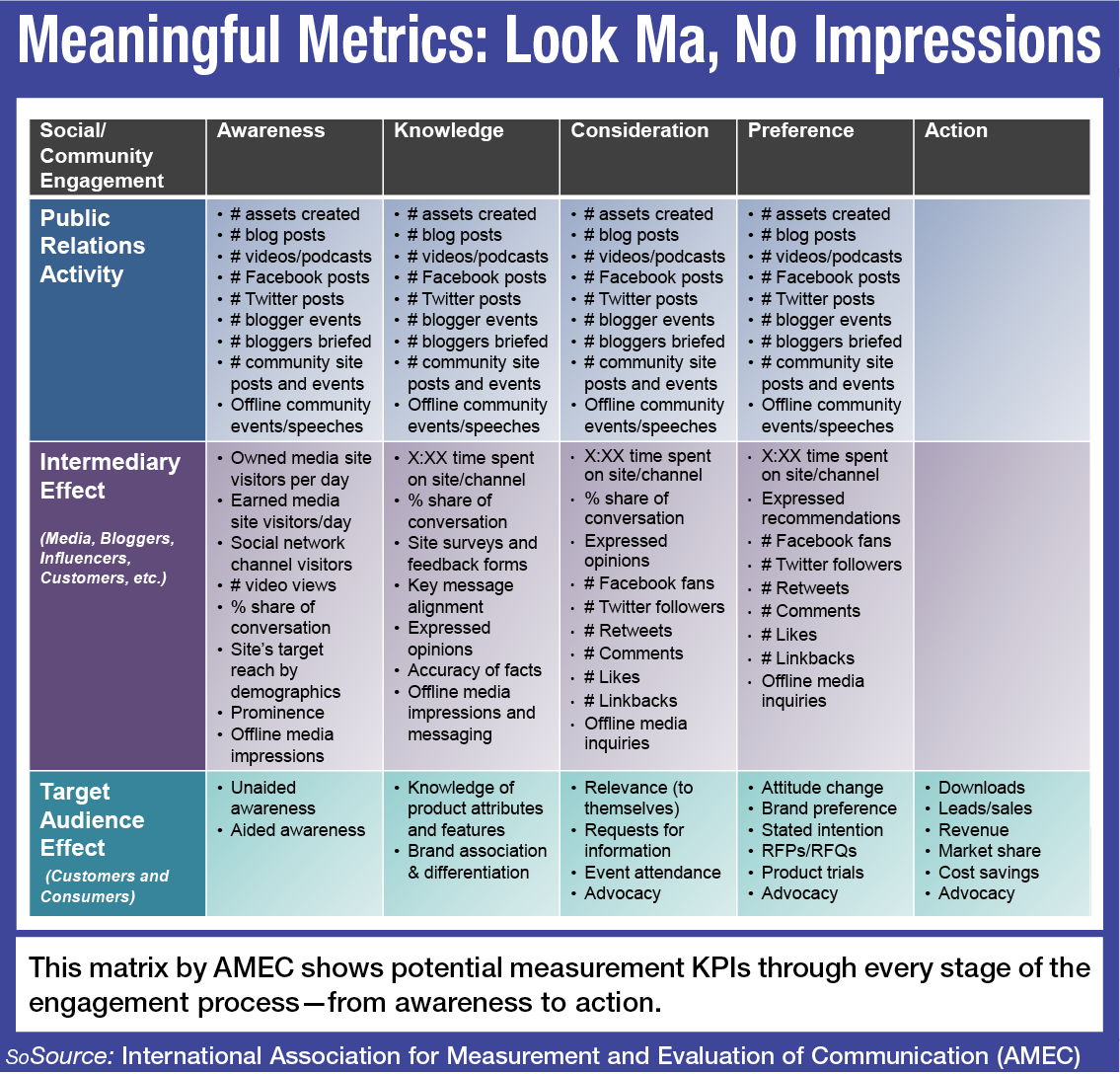Of all the PR disciplines, there’s likely not one of greater importance than media relations. And as 2013 kicks into high gear, measuring the effectiveness of media relations has never been so daunting—yet exciting—to PR pros. We’ve entered a new age of measurement, going beyond advertising value equivalents (by now, we hope) and even media impressions. Today it’s all about media content analysis, engagement and conversation.
“Public relations professionals should use the most consistent, reliable and defensible media data,” says Allyson Hugley, executive VP of measurement and analytics at Weber Shandwick.
 |
This is where taking a deeper dive into media measurement comes in handy. “The whole point is, we’ve gone from using old, folded up maps, to TripTix and now to GPS,” says Larry Parnell, associate professor and program director, Masters in Strategic PR, at George Washington University’s Graduate School of Political Management. “In communications, impressions are those old maps, as the expectations of executives have risen to some business connection.”
The primary question is: How does one rise above mundane media metrics in 2013? First, you have to develop the right mindset. Here are Hugley’s top eight suggestions for getting started:
#8: Measurement Is not an End Game: Evaluate media relations effectiveness throughout campaigns. “Measure to understand, inform and optimize,” Hugley says.
#7: Don’t Fly Blind: Charting a successful course forward requires knowing where you are. Conduct landscape and benchmark research to understand coverage and conversation dynamics.
#6. Focus on Business Value, not Communications Activity: Communications activities are a measure of productivity, not value. Measuring the impact on business outcomes is key: donations; reputation value; lead generation/contracts closed; likelihood to recommend; purchase intent and sales.
#5. Keep Your Ear to the Ground: Embrace the notion of constant calibration, listen for stakeholder reactions, monitor for competitor activity and establish “check points” to measure progress against objectives.
#4: Measure More than just Potential Audience: “Impressions are just opportunities to see, they are not a direct path to brand engagement,” Hugley says. Seeing a brand mention does not equal awareness or change in stakeholder perceptions.
#3: Focus on Coverage Quality, not just Quantity: Quantitative metrics provide a high-level view of the overall media landscape and coverage volume trends. Qualitative metrics focus on content appearing in target sources to capture message penetration and positioning insights.
#2: Don’t Look for the ‘Magic Number’: The focus of PR measurement is shifting from data to analytics, and actionable measurement is multi-dimensional. It should include a mix of environmental, perception and engagement measures.
#1. Merchandize your Success: Use data visualization to celebrate PR successes throughout the organization. “Emphasize on KPIs, and create compelling, insightful data display,” Hugley says.
CONTENT ANALYSIS KING
The ability to parlay metrics resonates with Parnell, particularly regarding his PR efforts on behalf of the American Society of Civil Engineers (ASCE). Throughout the years, its bi-annual “Infrastructure Report Card” had generated extensive media coverage and talking points for lobbying efforts.
The challenge faced by Parnell and his team was sustaining buzz between reports. “Interest and the value of the report would diminish,” Parnell says.
That’s where content analysis came in. The effort examined the coverage that was generated when the reports were published, tracking the amount of coverage and topics reported.
The analysis showed a distinct gap in coverage, as well as a focus on accentuating problems while not proposing solutions, Parnell says. As a result, in the future Report Cards will include initial solutions and milestones, with progress reports between the biannual publications.
CONVERSATION: THE NEW IMPRESSION?
.png) |
Robin Scullin, director of communications at YWCA USA, now sees measurement in a much different light than from before. “Back in the day it was about impressions, and we used to cut out a publication’s masthead and glue it on a piece of paper as proof,” she says. “Now it’s not just about earned media, it’s the engagement, the conversation around the campaign.”
That conversation is led via social media. Scullin says social platforms were a vital component in the 2011 Purple Purse campaign, in which YWCA and the Allstate Foundation partnered to raise awareness and support for survivors of domestic violence.
The Purple Purse website, a Facebook page, a Twitter hashtag and the support of 30,000 moms within the SocialMoms Network helped drive engagement, which Scullin says is the preferred metric of a number of YWCA’s partners.
On Facebook that October, there were 72,318 Facebook newsfeed impressions, 396 comments and 453 shares, as well as 1,035 recommendations—the highest number seen by the SocialMoms Network.
The lesson learned for Scullin: Earned media is still a measurement benchmark, but there are new, important platforms that tie into them. “Integration between them is critical,” Scullin says. PRN
CONTACT:
Allyson Hugley, [email protected]; Larry Parnell, [email protected]; Robin Scullin, [email protected].
Follow Scott Van Camp: @svancamp01
